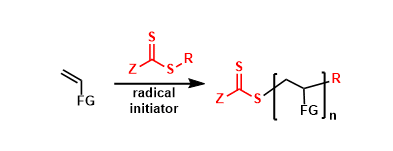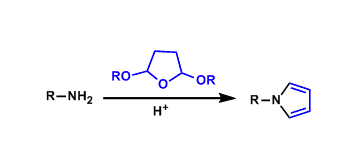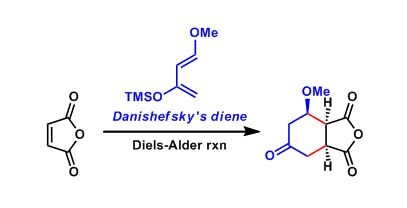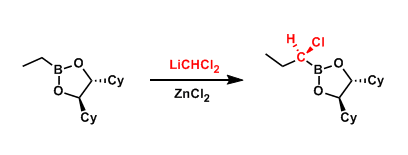General Characteristics RAFT (Reversible Addition-Fragmentation Chain Transfer) is a type of controlled living radical polymerization methods. By using thiocarbonyl compounds as the chian transfer ...
Author Archive
Neighboring Group Participation
General Characteristics When the functional group(s) located near the reaction center directly influences the reactivity or selectivity of a given reaction, the effect is referred to as neighboring ...
Zincke Aldehyde
General Characteristics Upon nucleophilic attack by secondary amines, 1-(2,4-dinitrophenyl)pyridinium chloride (the Zincke salt) opens up to give 5-aminopenta-2,4-dienal (the Zincke aldehyde). ...
Clauson-Kaas Pyrrole Synthesis
General Characteristics Pyrroles can be synthesized by the condensation of 2,5-dialkoxytetrahydrofurans with primary amines. General References Clauson-Kaas, N. Acta Chem. Scand. 1952, 6, 667. Josey, ...
Danishefsky-Kitahara Diene
General Characteristics trans-1-Methoxy-3-trimethylsiloxy-1,3-butadiene is commonly called the Danishefsky-Kitahara diene (or simply Danishefsky diene). The high HOMO energy level resulting from two ...
Freudenberg-Schönberg Thiophenol Synthesis
General Characteristics Phenols can be converted into thiophenols through thermal rearrangement of corresponding thiocarbamates or thiocarbonates followed by hydrolysis. General References ...
Catellani Reaction
General Characteristics The Catellani reaction is a type of three component reaction in which the Mizoroki-Heck reaction and ortho C-H alkylation with alkyl halide occur concomitantly in the presence ...
Markovnikov’s Rule
General Characteristics In electrophilic addition reactions of alkenes, the electrophiles (electronically positive atoms or groups) generally bond with the carbon that has more hydrogen atoms. This ...
Matteson Reaction
General Characteristics The one-carbon homologation of boronate compounds using α-halocarbanions is called the Matteson reaction. The rearrangement of the intermediate can be rendered stereoselective ...
Protecting Groups for Boronic Acids
General Characteristics Boronic acids are stable towards air and moisture and are usually solids that can be handled easily. Even though they are undoubtedly an important class of reagents used for ...










